Nodes are the essential building blocks in the Advanced interface to the Poser Material Room. They are the graphical representation of mathematical function calls, that is: calculation procedures which turn parameters (inputs) to a result (output).
Intermediate
Real velvet is some ‘hairy’ cloth, with short shaved strands standing out. As a result, one looks into the bare ends of the strands when looking perpendicular to the cloth, without any specularity, and with deep dark color. When looking at it sideways however, one looks at the sides of the strands which do have some specularity, and usually have a lighter color. That’s the ‘Sheen’.
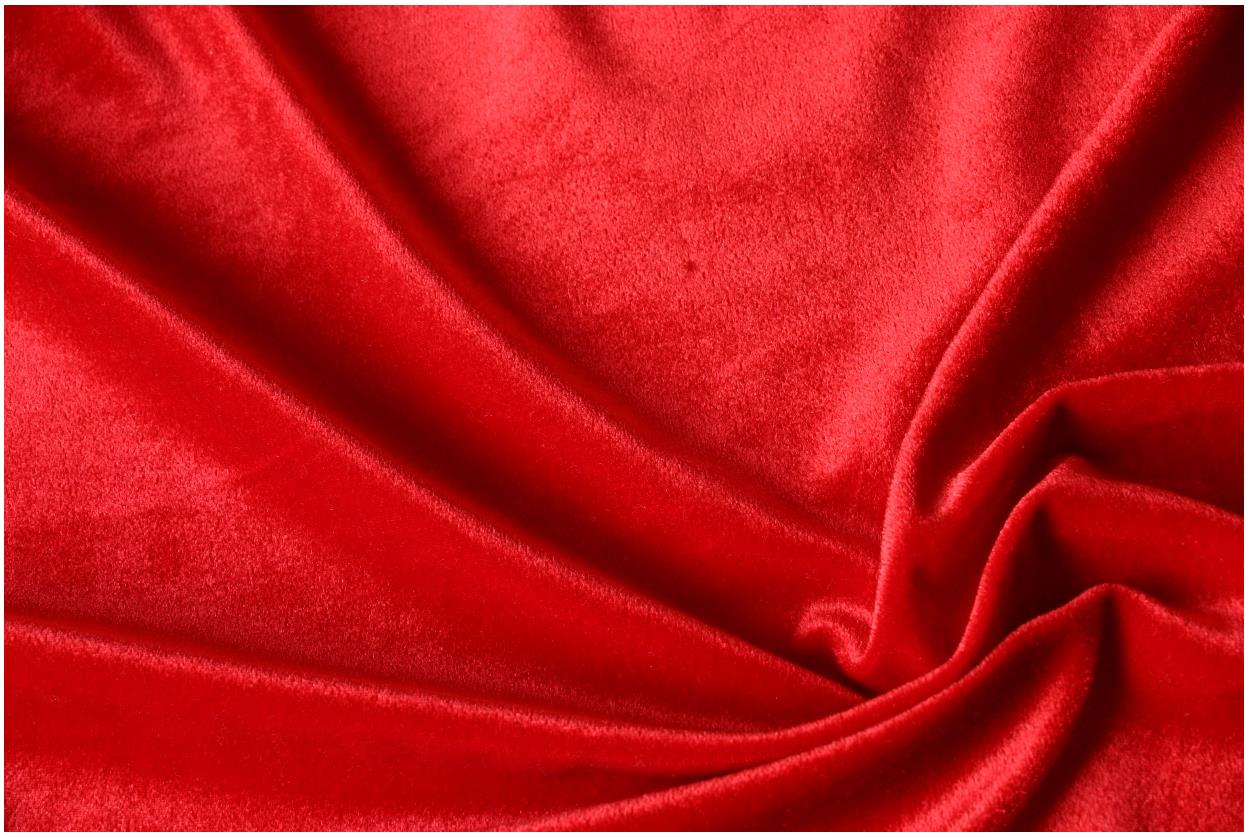
Note that the strands – which stand perpendicular to the cloth – that point towards the camera have the deep red color.
To illustrate this, just consider the extreme case of blue strands and a white sheen (right pawn, the left pawn shows regular diffuse and specular):
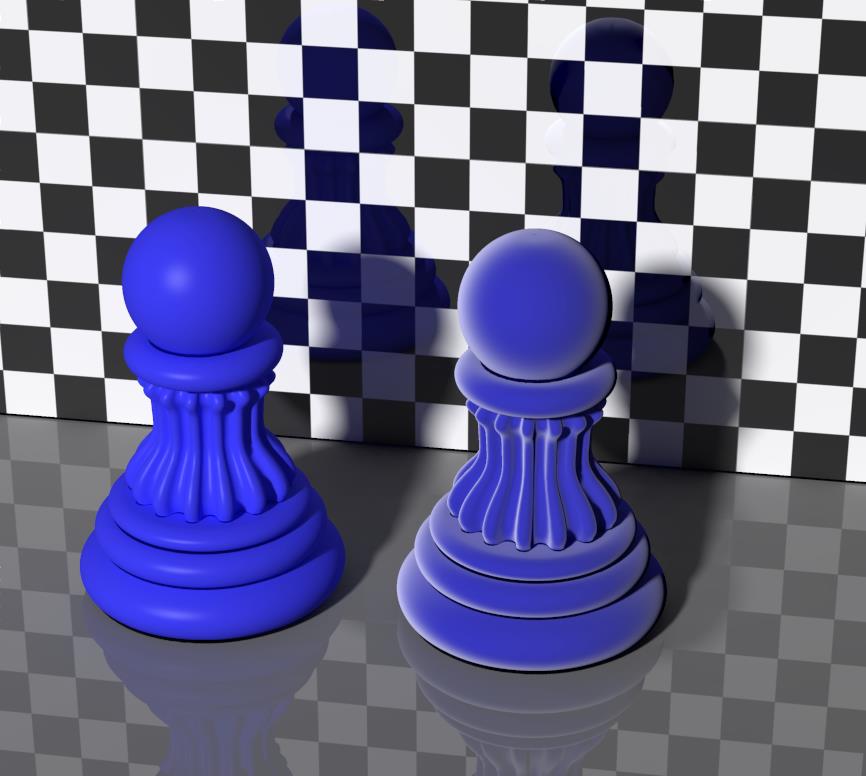
Although a just paler shade of the (Velvet_)Color makes a better sheen:
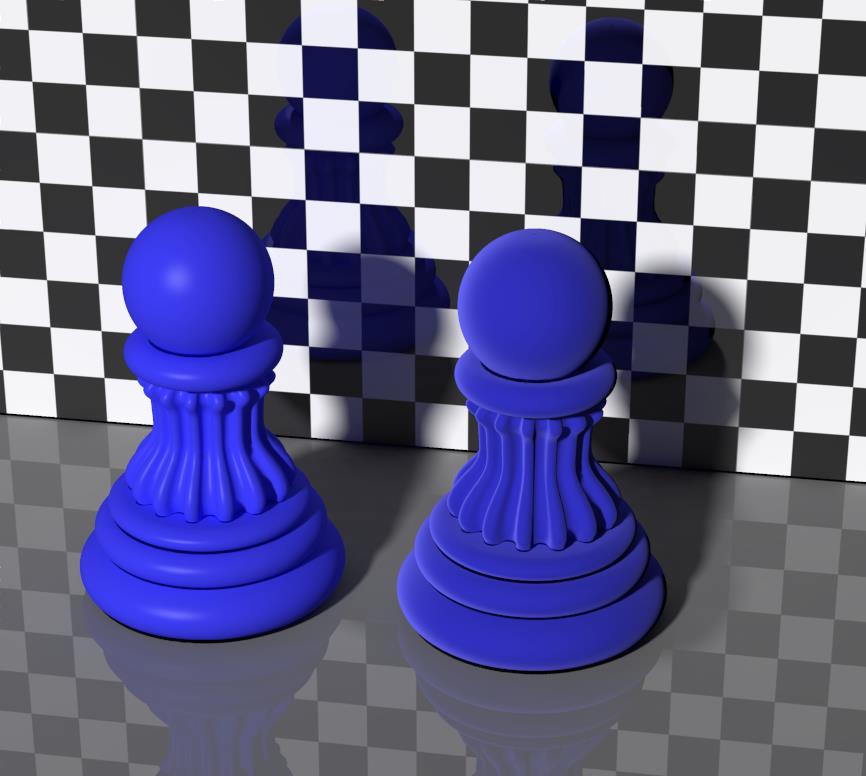
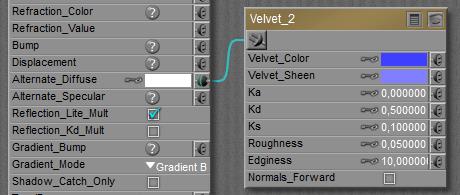
Note that darker or off-color sheens can make interesting stuff, which however are not realistic velvets. But strands with a bluish inside core and a dark purple outside coat can make:
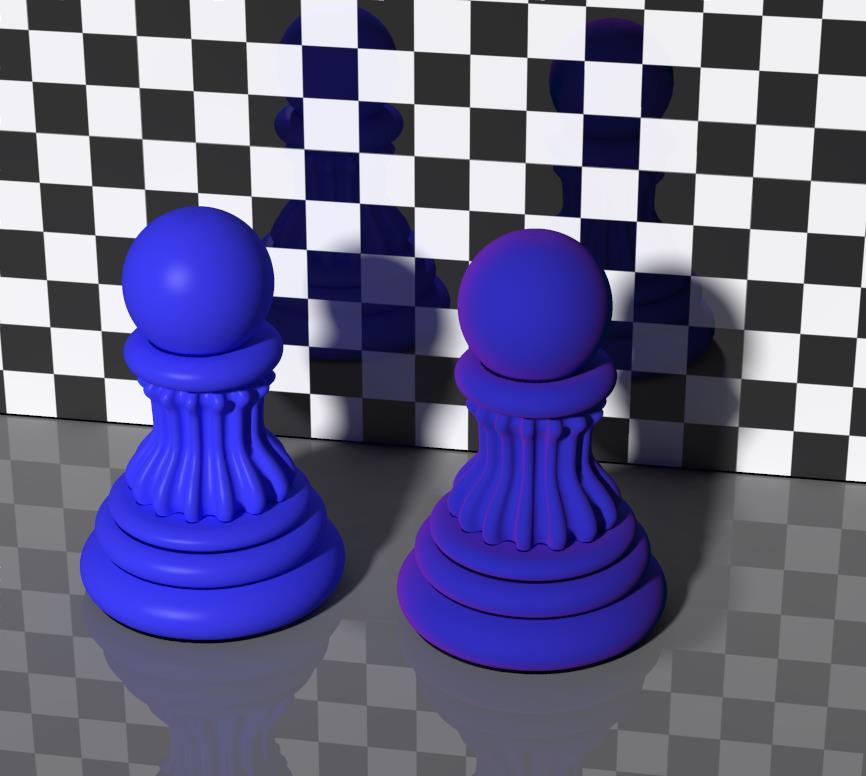
Like all special nodes, the Velvet node also provides diffuse, specular and eventually more as an all-in-one offer. Just black-out (or nullify) the regular Diffuse, Specular and other properties of the PoserSurface, and plug the node into Alternate Diffuse.
Kd, Ks and Ka represent the regular Diffuse_Value, Specular_Value and Ambient_Value and present any required mixture of those components. Roughness is the direct equivalent of Highlight_Size in PoserSurface, or Roughness in the various specular nodes. Its value is similar as well. Normals_Forward is the same as in PoserSurface, and in all diffuse and specular nodes.
The only new one is Edginess. The default (around 10) value makes realistic velvets. Low values (say 1.0) make very short-haired lightweight velvets, for which the Velvet_Sheen is quite dominant. High values (say 100) make long-haired heavy-weight velvets, for which the Velvet_Color itself is by far the dominant one. Compare cloth for T-shirts (lightweight) and for theatre curtains (heavy weight). Both extremes will lose the velvet effect somewhat.